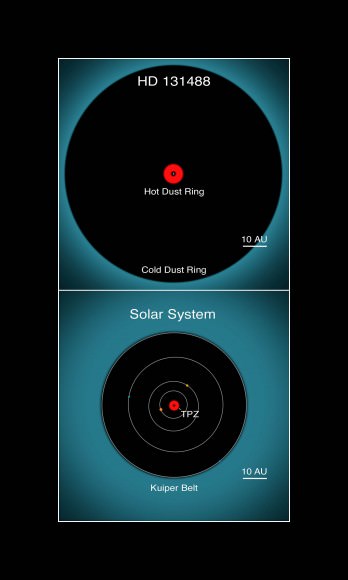What could potentially be the biggest problem during a human mission to Mars? One NASA study says, surprisingly, that dust could be the number one risk for both humans and equipment. Human explorers could inhale the extremely fine but rough dust particles causing severe respiratory problems, and high winds on Mars could disperse the dust to coat solar panels, penetrate through seals and interfere with machinery. But scientists at the University of Vermont may have come up with a new way to combat dust: acoustic levitation. But will it work on Mars?
The researchers conducted a feasibility study to develop an acoustic dust removing system for use in space stations or habitations on the Moon or Mars. They found a high-pitched (13.8 kHz, 128 dB) standing wave of sound emitted from a 3 cm aperture tweeter and focused on a reflector 9 cm away was strong enough to dislodge and move extremely fine (<2 µm diameter) dust particles on the reflector surface. The sound waves overcome the van der Waals adhesive force that binds dust particles to the surface, and creates enough pressure to levitate the dust, which is then blown away.
The team tested the system on a solar panel coated with mock lunar and Martian dust. The output of the clean panel was 4 volts, but when coated with dust it produced only 0.4 volts. After four minutes of acoustic levitation treatment the output returned to 98.4% of the maximum.
Mars dust, although fine, is rougher that Earth dust, and likely is more similar to the dust that covers the Moon. The thin atmosphere on Mars means dust particles are not as rounded as they would be on Earth and can remain quite sharp and abrasive.
[/caption]
Mars dust, as we have found with the Mars rovers, has a high electrostatic charge, which means the fine dust clings to everything. The dust has severely decreased the efficiency of solar panels on the rovers, and over time has likely caused other problems with the mechanical operation on the rovers as well. We've had several articles here on Universe Today discussing the problems of dust on the solar panels of the Mars Exploration Rovers, and inevitably we get comments from readers suggesting "wiper blades" or other types of cleaning solutions for the solar panels. Amazingly, Mars itself has cleaned the rovers' solar panels several times with gusts of wind from the almost ubiquitous Martian dust devils.
Acoustic levitation could be a solution, as it would be cheap and easily built. But there is a problem, and it is a big one: it will only work when it is sealed inside a space station or other habitation. It will not work where there is no atmosphere (such as the moon) or where the atmosphere is low pressure and thin (such as Mars) because sound is a pressure wave that travels through the air.
So, we might be stuck with having to resort to wiper blades, or devising a way to mimic the dust devils and gusts of wind that have repeatedly benefited the Mars rovers. Unless we can figure out a way to get dust to levitate without sound. Nirvana anyone?
Source: PhysOrg
Could Mars Dust Be “Levitated” Away?



